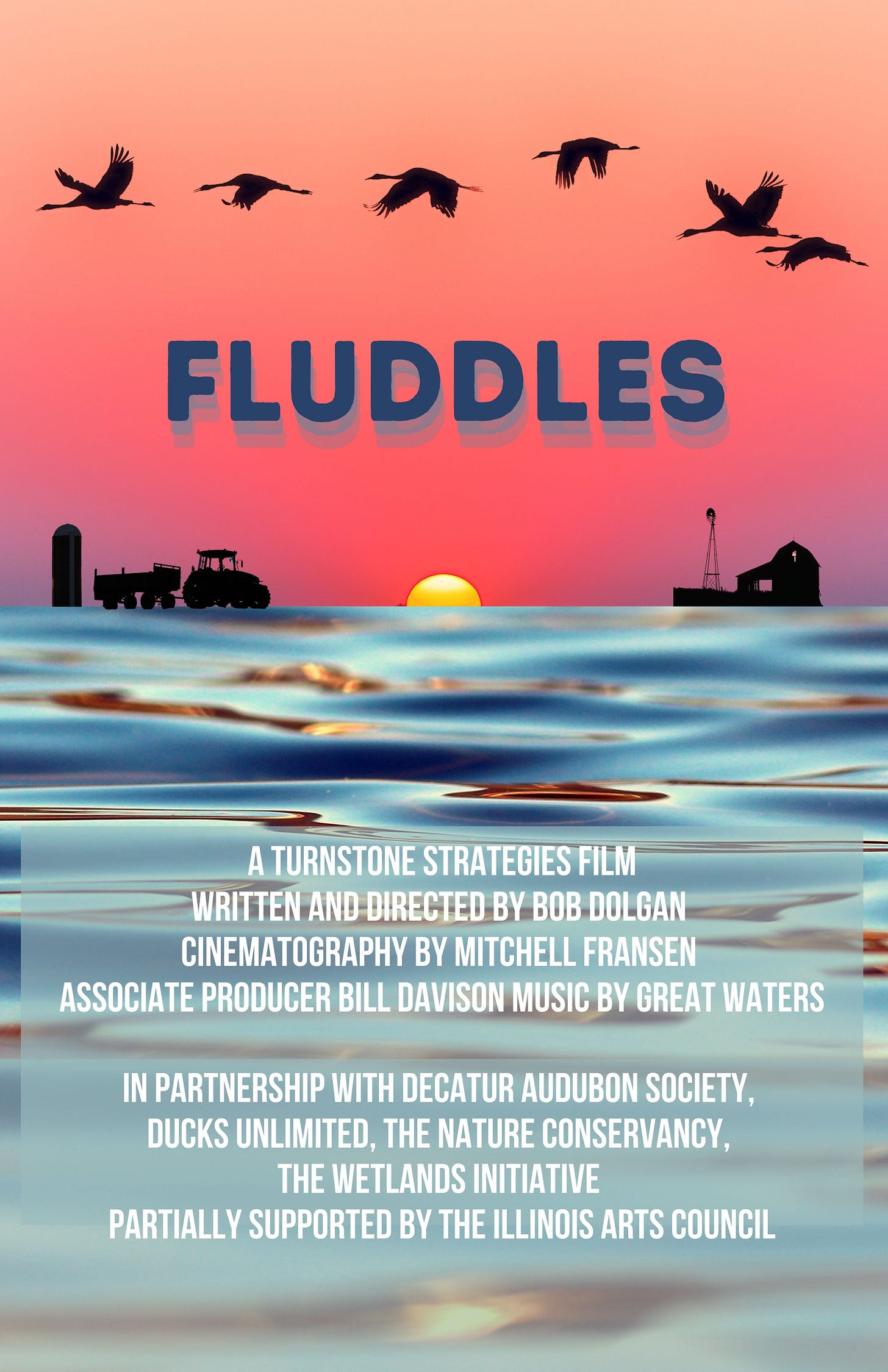Introducing "Winging It: A Brief History of Humanity's Relationship with Birds"
I'm curating an exhibition. Plus, a free FLUDDLES virtual showing and a batch of TWiB Notes.

“We gave the natural science materials to the Crerar Library.”
Those are words I heard when I arrived at the Newberry Library last year. People knew I was a birder and wanted to be up front about the library’s core collections. They also were curious about what topics might interest me.
Back in the 1890s, the library decided to focus on the humanities rather than biology and medicine. So it allocated the more nature-y portions of the collection to the Crerar Library, which is now part of the University of Chicago. I thought I’d be plenty interested in the rest of the Newberry’s collection, which spans 600 years of human history and an array of core subjects from cartography to the Renaissance to Indigenous Studies. There were 27 miles worth of materials to dig into.
I was exploring the Newberry’s materials in its fabled reading rooms when it was suggested I curate a project about birds and how they show up in the collection. Despite that early giveaway of nature items, birds of course do show up throughout human history—and in a collection that encompasses 1.6 million volumes and 5 million manuscript pages.

Next summer I’ll be curating an exhibition called “Winging It: A Brief History of Humanity's Relationship with Birds.” It runs from June 19 through September 27, 2025. I’m excited to share what I’ve found. The materials date to as early as 1546 and span the United States, Mexico, the United Kingdom, Germany, and France. The story of birds and people isn’t always a happy one, especially as it shows up in the Newberry’s stacks. At the same time, there are items that range from the fanciful to the inspiring earliest moments of the conservation movement. I hope to accentuate the positive while acknowledging a fraught history.

The Newberry’s collection includes many examples of early conservation efforts, mostly centered in England with some in the Americas. Brits like Charles Waterton, Thomas Bewick, Francis Willughby, and Mark Catesby paved the way for the conservationists of the late nineteenth and early twentieth century.
I look forward to sharing more as next June approaches, and I hope you get a chance to visit Chicago and the exhibition when it takes place.
The Year of the Peregrine
Before Monty and Rose arrived in 2019, some might say the Peregrine Falcon was the endangered species most associated with Chicago. The city’s skyscrapers had provided an unlikely haven for the medium-sized falcons, which had been facing declines for years. Indeed, the Peregrine Falcon was declared the city bird of Chicago in 1999.
Chicago Ornithological Society is celebrating the 25th anniversary of the occasion with the Year of the Peregrine, a series of events and commemorations of one of the fastest animals alive. Upcoming events include a gathering of COS’ Flock Club on August 14 and a Peregrine “hawkwatch” on October 4 at Steelworkers Park. Check out the full slate of activities on COS’ website.
COS has invited me to show “FLUDDLES” as part of their Birds & Bytes series, August 8 at 6pm Central. It’s a virtual screening, available from anywhere, all you have to do is register here. I’m excited to share a newly re-edited version of the film. I’d call it a “Director’s Cut,” but that wouldn’t make sense since I cut the previous one, too. I’ve never understood the term “Director’s Cut.”
Good news at Chicago’s McCormick Place
Longtime TWiB readers may recall the day last fall when hundreds of birds collided with the McCormick Place convention center, which juts out near Lake Michigan. I wrote when it happened that there was a small silver lining in that elected officials actually made statements about the problem, which hadn’t happened previously.
And now there’s good news, according to WTTW.com:
Bird-friendly window film is being installed on the convention center’s approximately two football fields’ worth of glass. Work on the $1.2 million project began in early June and is expected to take approximately three months, according to a spokesperson for the Metropolitan Pier and Exposition Authority (MPEA), which runs Lakeside Center.
The pattern of tiny white dots on the windows will provide birds with a visual cue that there’s an obstacle in their path, versus see-through or reflective glass that misleads birds into thinking the way is clear or that habitat is present.
In a statement provided to WTTW News, Clark said, “As an organization that strives to be a good neighbor and environmental steward, the Metropolitan Pier and Exposition Authority (MPEA) remains committed to minimizing McCormick Place’s impact on local and migratory birds.”
The window film likely won’t prevent all collisions, but it is a big step forward.
TWiB Notes
In case you missed it, the Chicago Sun-Times had a cover story by columnist Dale Bowman yesterday looking back at the legacy of Piping Plovers Monty and Rose. It’s worth noting that the success in Illinois this year has contributed to another new milestone for Great Lakes Piping Plovers—81 nests this season, the most in decades and just barely topping last year’s total…..Audubon Magazine recently took a close look at the eastern White-tailed Deer population and the crisis affecting our hardwood forests. The proliferation of the ungulates is a serious issue without easy answers……Crows are super-smart corvids, and a city in Sweden has put them to work cleaning up cigarette butts. For each discarded butt, the crows receive a small piece of food as a reward.






Maybe the waters were too high for the huge gathering, but credit to you to get them noticed by an even greater audience. Well done! And those crows, making a living on the street!
Bob, your research at the Newberry is original for their collection and probably more broadly. The exhibit will be awesome and I really look forward to taking it in! Congratulations on the curation.